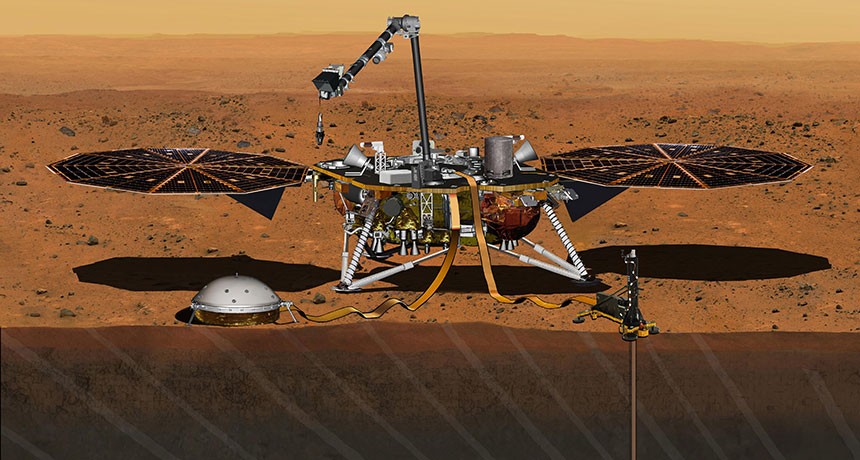NASA delays mission to Mars
A leak in the instrument appears unable to be fixed by the craft’s planned launch window from March 4 to March 30, 2016.
But one of the instruments on the lander has sprung a stubborn vacuum leak, and efforts to fix it failed a deep-freeze test on Monday.
Together these science instruments were to provide a much better view of the history of Mars, particularly around its interior structure and the forces that shaped the formation of rocky planets like Earth and Mars in the inner solar system.
The three seismometers in the instrument, sensitive enough to detect vibrations as slight as the width of an atom, require a near-perfect vacuum for precise measurements.
A problem with the seismometer triggered cancellation of the launch, the agency said in a statement on Tuesday. Robotic spacecraft are leading the way for NASA’s Mars Exploration Program, with the upcoming Mars 2020 rover being designed and built, the Opportunity and Curiosity rovers exploring the Martian surface, the Odyssey and Mars Reconnaissance Orbiter spacecraft now orbiting the planet, along with the MAVEN orbiter, which recently helped scientists understand what happened to the Martian atmosphere.
The Mars InSight lander is created to study the interior of Mars. The mission costs a total of $675 million, and some $525 million have been spent till now.
The InSight spacecraft was scheduled for launch in March and the leaking seal of the protective envelope around the lander’s seismometer, which is meant to measure ground movement on the red planet, had forced NASA to call off the mission.
By studying seismic activity, NASA hopes to be able to determine the boundaries of the crust, mantle, and core of the planet.
NASA made a decision to suspend its seismic investigations Geodesy and Heat Transport or inSight mission due to leaking and failure to hold a vacuum in extreme cold temperature.
“Unfortunately since last August we’ve been fighting a series of very small leaks”, John M. Grunsfeld, associate administrator for the Science Mission Directorate at NASA, said during the news conference. The next launch window won’t come for another two years, leaving the future of the project unclear. This was later repaired and the mission team was hopeful the most recent fix would be successful.
“This was going to be our first mission to explore the interior of Mars using the same techniques we used to explore the interior of Earth”, said Grunsfeld.








